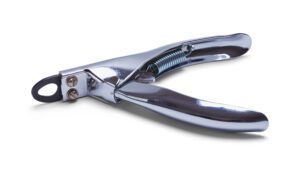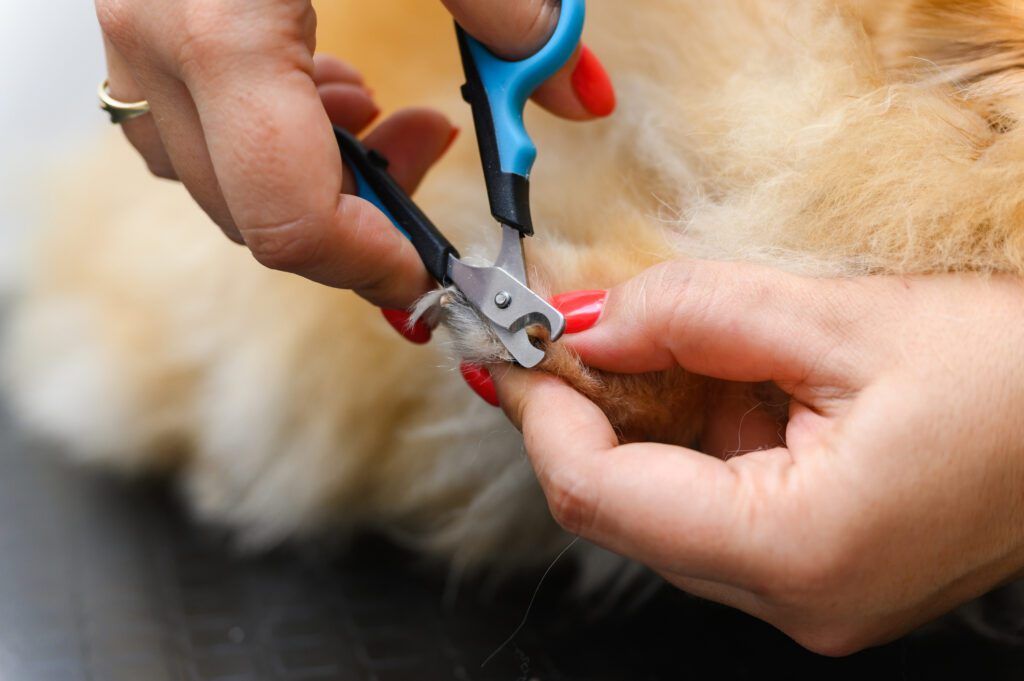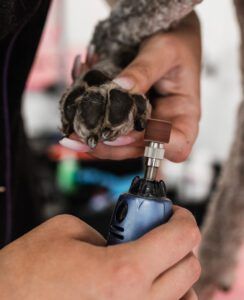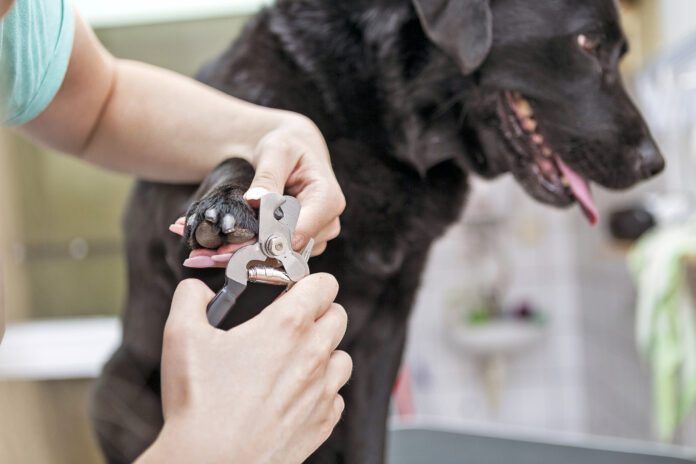Most dogs do not like having their nails trimmed, but with patience, they can learn to tolerate it. With a little practice, nail trimming can become a stress-free part of your regular grooming routine. We’ll get you started with the two primary methods for trimming nails and some tips for troubleshooting.
First, if you can hear the click-click of your dog’s nails when he walks across a floor, it’s time to trim his nails. The two most common tools used to shorten dog nails are clippers or nail grinders. Clippers come in several types (scissor and guillotine) and have the advantage of being quieter and less expensive. However, they can be unforgiving if the person doing the nail trim makes a mistake. Nail grinders, on the other hand, make it less likely to shorten dog nails too much—and create smoother edges—but their noise and vibration can be difficult for some dogs to tolerate.
At the end of the day, it’s all about finding which tool works best for you and your dog.
Rare is the dog who likes having their nails cut. However, you can gradually accustom your dog to having his nails trimmed:
- Identify valuable rewards for your dog. Some dogs go ga-ga over peanut butter, others prefer cheese or hotdog bits. Some think playing tug or fetch is the best thing ever. Figure out what your dog LOVES and use that to pay him well at nail trim time.
- Go slowly. It is far better to do one nail at a time and have your dog happy than fight through all of them.
- Take just the tips. This limits any risk of hurting your dog and will help both of you get more confident. Trimming just the tips once a week will still get your dog’s nails under control over time.
- If your dog suddenly flinches while grinding the nails, you probably hit the quick. Be less aggressive with the next nail.
- Try different positions to see how your dog is most comfortable being still and how you can see what you are doing. Some options are standing on a secure table, lying on the couch, or lying upside down in your lap.
- Get a helper to feed tiny treats or hold a spoon with peanut butter while you trim the nails.
- Practice holding your dog’s feet every day for treats and teach tricks such as shake and high five.
How To Avoid Cutting a Dog’s Nail Quick

The main thing to watch out for when trimming dog nails is cutting the nail too short. Dog nails have a sensitive “quick” that, if cut, will cause pain and bleeding. The quick can vary in length—it tends to get shorter with regular nail trims—but typically does not extend much past the tapering curve at the tip of the nail.
If a dog has white nails, the quick will appear pink. However, it may be impossible to spot in black nails. Especially if you can’t see it, the best way to avoid cutting the quick is to start slowly and trim a little bit at a time. It’s better to do multiple small trims over the course of days or weeks to avoid a painful experience for your dog.
As noted above, it can be a challenge to avoid cutting the quick when trimming dark brown or black dog nails. Just like with lighter-colored nails, the key to cutting black dog nails safely is to start by trimming only a small amount of nail. Once the first cut is made, examine the newly trimmed nail tip.
In black dog nails, the quick typically appears grey or black while the surrounding inner layer of the nail is lighter in color. If you don’t see the quick, keep trimming very thin slices and checking the nail after each cut. Stop trimming as soon as the quick becomes visible.
If you do cut a nail too short and it starts to bleed, don’t panic. When trimming dog nails, it’s a good idea to have some styptic powder nearby. Styptic powder can be applied to the cut tip of the nail to help stop any bleeding. If the nail is still bleeding after 30 minutes, contact your vet.
How to Cut Dog Nails Using a Dog Nail Clipper

Before starting the nail trim, find a position that is comfortable for you and your dog. This may be putting your dog on a raised surface such as a grooming table or couch, sitting on the floor with him, or teaching him to lay flat on his side. There is no wrong way provided you can easily see (and reach) his nails and he is content.
- Pick up the first paw and gently fold back any loose hair so you can clearly see the nail.
- Identify where you are going to cut. For white nails, avoid the pink quick down the middle of the nail and just cut in solid white. For black nails, focus on the tapered part of the nail and not the wide base.
- Clip in one smooth steady motion. Aim to cut the nail at approximately a 45-degree angle (see illustration above).
- Praise and reward your dog.
- Trim sharp edges if using scissor-type clippers.
- Move on to the next nail.

How To Trim Dog Nails with a Grinder

- Spend some time getting your dog used to the sound of the grinder. Give him treats while it is running, first a few feet away and then held close to his paws.
- Touch the grinder to your dog’s nail and immediately praise and reward. Repeat several times so he associates the vibrating sensation with good things.
- When ready to grind a nail fully, hold the grinder at a 45-degree angle to the nail. Apply light pressure so it files the nail back. Repeat on the other side of the nail to even it out.
- Smooth out any rough or sharp spots so the nail tip is rounded.
- Move on to the next nail (or take a break if your dog is new to this).






